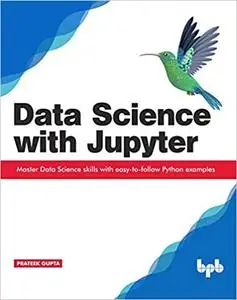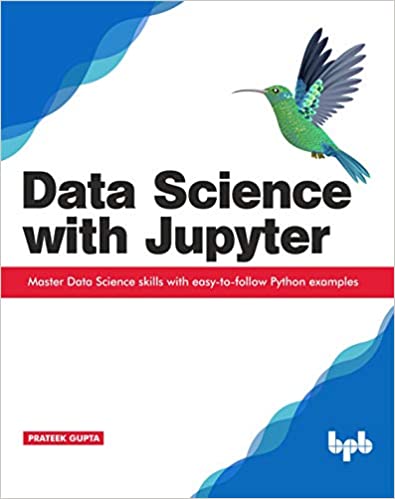Data Science with Jupyter: Master Data Science skills with easy-to-follow Python examples by Prateek Gupta
English | 2019 | ISBN-13: 978-9388511377 | 397 Pages | PDF | 26.6 MB
English | 2019 | ISBN-13: 978-9388511377 | 397 Pages | PDF | 26.6 MB
Step-by-step guide to practising data science techniques with Jupyter notebooks
Key Features
• Acquire Python skills to do independent data science projects
• Learn the basics of linear algebra and statistical science in Python way
• Understand how and when they're used in data science
• Build predictive models, tune their parameters and analyze performance in few steps
• Cluster, transform, visualize, and extract insights from unlabelled datasets
• Learn how to use matplotlib and seaborn for data visualization
• Implement and save machine learning models for real-world business scenarios
Description
Modern businesses are awash with data, making data driven decision-making tasks increasingly complex. As a result, relevant technical expertise and analytical skills are required to do such tasks. This book aims to equip you with just enough knowledge of Python in conjunction with skills to use powerful tool such as Jupyter Notebook in order to succeed in the role of a data scientist.
The book starts with a brief introduction to the world of data science and the opportunities you may come across along with an overview of the key topics covered in the book. You will learn how to setup Anaconda installation which comes with Jupyter and preinstalled Python packages. Before diving in to several supervised, unsupervised and other machine learning techniques, you’ll learn how to use basic data structures, functions, libraries and packages required to import, clean, visualize and process data. Several machine learning techniques such as regression, classification, clustering, time-series etc have been explained with the use of practical examples and by comparing the performance of various models.
By the end of the book, you will come across few case studies to put your knowledge to practice and solve real-life business problems such as building a movie recommendation engine, classifying spam messages, predicting the ability of a borrower to repay loan on time and time series forecasting of housing prices. Remember to practice additional examples provided in the code bundle of the book to master these techniques.



